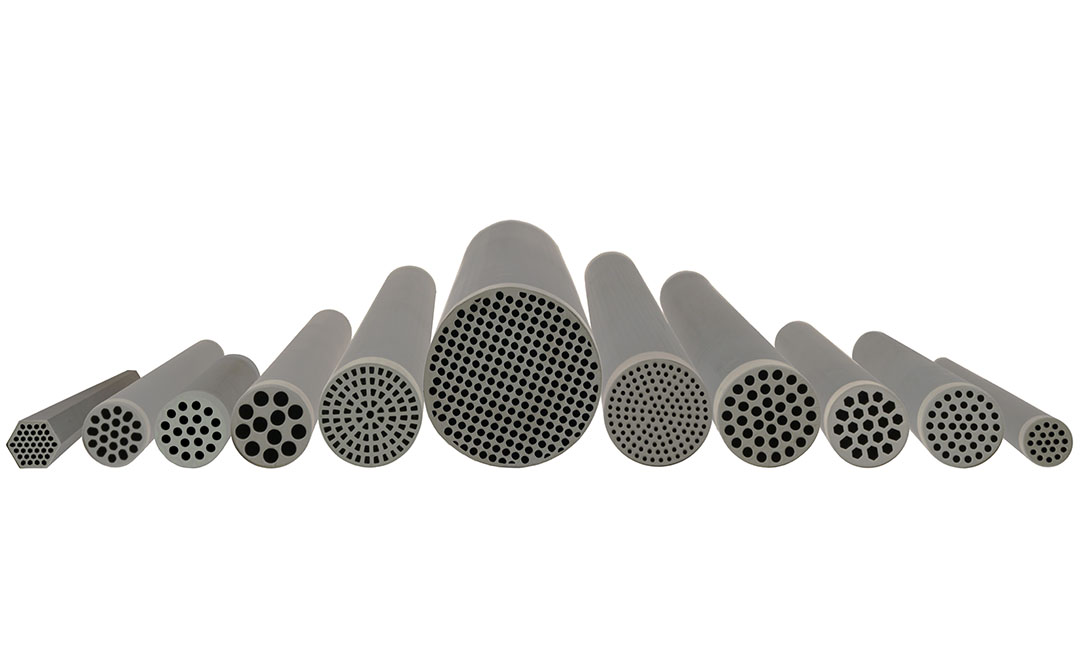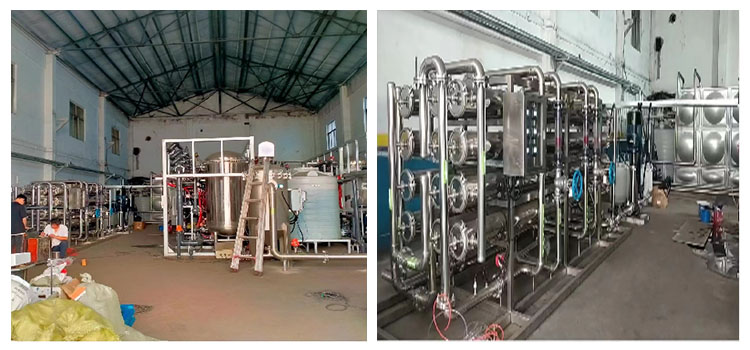Benefits of SiC Gas Separation Membranes in Industrial Applications
Gas separation membranes play a crucial role in various industrial applications, including gas purification, natural gas processing, and hydrogen production. Among the different types of gas separation membranes available, silicon carbide (SiC) membranes have emerged as a promising solution for clean gas filtration. SiC membranes offer several advantages over traditional polymeric membranes, including higher thermal stability, chemical resistance, and mechanical strength.
One of the key benefits of SiC gas separation membranes is their superior performance in high-temperature environments. SiC membranes can withstand temperatures up to 1000°C, making them ideal for applications where conventional polymeric membranes would degrade or lose their efficiency. This high thermal stability allows SiC membranes to be used in processes such as steam reforming, where high temperatures are required for efficient gas separation.
In addition to their thermal stability, SiC membranes also exhibit excellent chemical resistance, making them suitable for a wide range of industrial applications. Unlike polymeric membranes, which can be susceptible to chemical attack and degradation, SiC membranes are highly resistant to corrosive gases and liquids. This chemical resistance allows SiC membranes to be used in harsh environments, such as the petrochemical industry, where the filtration of corrosive gases is essential.
Furthermore, SiC gas separation membranes offer superior mechanical strength compared to polymeric membranes. The robust nature of SiC membranes allows them to withstand high pressures and mechanical stresses, making them suitable for applications where durability is a key requirement. This mechanical strength also ensures the long-term reliability of SiC membranes, reducing the need for frequent maintenance and replacement.
Another advantage of SiC gas separation membranes is their high selectivity and permeability. SiC membranes can selectively separate gases based on their molecular size and shape, allowing for precise control over the gas separation process. This high selectivity results in a purer gas product, with lower levels of impurities and contaminants. Additionally, SiC membranes have high permeability, enabling fast and efficient gas separation with minimal energy consumption.

The combination of thermal stability, chemical resistance, mechanical strength, selectivity, and permeability makes SiC gas separation membranes an advanced solution for clean gas filtration in industrial applications. These membranes offer improved performance and reliability compared to traditional polymeric membranes, making them a preferred choice for demanding gas separation processes.
In conclusion, SiC gas separation membranes provide several benefits for industrial applications, including high thermal stability, chemical resistance, mechanical strength, selectivity, and permeability. These advanced membranes offer a reliable and efficient solution for clean gas filtration, enabling the purification of gases in a wide range of industries. With their superior performance and durability, SiC membranes are poised to play a key role in the future of gas separation technology.
Comparison of SiC Gas Separation Membranes with Traditional Filtration Methods
Gas separation membranes play a crucial role in various industries, including petrochemical, natural gas processing, and environmental protection. These membranes are designed to separate gases based on their molecular size and shape, allowing for the purification of gases and the removal of impurities. Silicon carbide (SiC) gas separation membranes have emerged as advanced solutions for clean gas filtration, offering several advantages over traditional filtration methods.
One of the key advantages of SiC gas separation membranes is their high thermal and chemical stability. SiC is a robust material that can withstand high temperatures and harsh chemical environments, making it ideal for use in gas separation applications. Traditional filtration methods, such as porous membranes or adsorption processes, may not be able to withstand the same conditions as SiC membranes, leading to decreased efficiency and durability.
In addition to their stability, SiC gas separation membranes also offer superior gas selectivity and permeability. These membranes can selectively separate gases based on their molecular size and shape, allowing for the efficient removal of impurities and contaminants. Traditional filtration methods may not be as selective or efficient, leading to lower purity levels and increased energy consumption.

Furthermore, SiC gas separation membranes have a longer lifespan compared to traditional filtration methods. The robust nature of SiC allows for extended use without degradation, reducing the need for frequent replacements and maintenance. This not only saves time and resources but also contributes to a more sustainable and environmentally friendly filtration process.
Another advantage of SiC gas separation membranes is their scalability and versatility. These membranes can be easily tailored to specific gas separation requirements, making them suitable for a wide range of applications. Traditional filtration methods may be limited in their adaptability and may not be as efficient or cost-effective for certain gas separation processes.
Overall, SiC gas separation membranes offer a more advanced and efficient solution for clean gas filtration compared to traditional methods. Their high thermal and chemical stability, superior gas selectivity and permeability, longer lifespan, and scalability make them an attractive choice for industries looking to improve their gas separation processes.
In conclusion, SiC gas separation membranes represent a significant advancement in clean gas filtration technology. Their unique properties and advantages make them a superior choice over traditional filtration methods, offering improved efficiency, durability, and sustainability. As industries continue to prioritize clean gas filtration and environmental protection, SiC membranes are likely to play a key role in meeting these demands.
Future Trends and Developments in SiC Gas Separation Membranes Technology
Silicon carbide (SiC) gas separation membranes are at the forefront of advanced solutions for clean gas filtration. These membranes offer high thermal stability, chemical resistance, and mechanical strength, making them ideal for a wide range of applications in the gas separation industry. As technology continues to evolve, future trends and developments in SiC gas separation membranes are poised to revolutionize the way we filter gases for various industrial processes.
One of the key trends in SiC gas separation membranes is the development of more efficient and cost-effective manufacturing processes. Researchers are exploring new methods to produce SiC membranes with higher purity and better performance, such as chemical vapor deposition (CVD) and sol-gel techniques. These advancements will not only improve the overall quality of SiC membranes but also make them more accessible to a wider range of industries.
Another important trend in SiC gas separation membranes is the integration of nanotechnology. By incorporating nanoscale materials into the membrane structure, researchers can enhance the selectivity and permeability of the membranes, leading to improved gas separation efficiency. Nanotechnology also allows for the development of tailored membrane designs that can target specific gas molecules, making SiC membranes even more versatile and effective in various applications.
Furthermore, the use of SiC gas separation membranes in renewable energy technologies is a growing trend in the industry. As the demand for clean energy sources continues to rise, SiC membranes are being utilized in processes such as hydrogen purification and carbon capture to help reduce greenhouse gas emissions and promote sustainable energy production. By leveraging the unique properties of SiC membranes, researchers are exploring new ways to enhance the efficiency and reliability of renewable energy systems.
In addition to these trends, advancements in material science are driving innovations in SiC gas separation membranes. Researchers are exploring new materials and coatings that can improve the performance and durability of SiC membranes, such as graphene and carbon nanotubes. These materials offer unique properties that can enhance the gas separation capabilities of SiC membranes, making them even more effective in demanding industrial applications.
As the demand for clean gas filtration solutions continues to grow, the development of SiC gas separation membranes is expected to play a crucial role in meeting the needs of various industries. With ongoing research and development efforts focused on improving the performance and efficiency of SiC membranes, the future looks promising for this advanced technology. By embracing the latest trends and developments in SiC gas separation membranes, industries can benefit from cleaner, more sustainable gas filtration solutions that meet the demands of a rapidly evolving market.
In conclusion, SiC gas separation membranes are poised to revolutionize the way we filter gases for various industrial processes. With advancements in manufacturing processes, nanotechnology, renewable energy applications, and material science, SiC membranes are becoming more efficient, versatile, and reliable than ever before. By staying at the forefront of future trends and developments in SiC gas separation membranes technology, industries can harness the full potential of this advanced solution for clean gas filtration.

